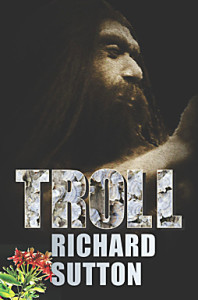I Write for Myself . . . Right?
 This week, my guest is Richard Sutton, a New Yorker who likes to write historical fiction and fantasy.
This week, my guest is Richard Sutton, a New Yorker who likes to write historical fiction and fantasy.
His comments were in response to my recent blog (July 28th) on breaking out of socially accepted gender roles, which is a key theme in my forthcoming novel, A Fitting Place.
I Write for Myself . . . Right?
It’s a statement overheard in variations around literary water coolers: “…writers should write primarily to please ourselves.” But visit any online bookselling site with reader reviews, and you’ll find examples of how writers miss the mark with readers. I’ve read comments on my own books that made me wonder how I’d so thoroughly misfired. Now, on my fifth novel, I’ve finally learned to take the time to do it right.
It always begins with the story, but our tales can take us down many twisting paths. They’ll keep us awake at night, wondering what might happen. They’ll enter our conversations or keep us so distracted that conversation might well become impossible. And then the idea of sharing the story outside our writing warren begins to whisper in our ears. About the same time, our writer’s ego starts telling us of the joys of unbridled discovery lying just outside of our comfort zone. How much truth should we reveal? How raw is raw? Can I take the voice someplace I’ve never actually been before? Who do I listen to? (Fiendish laughter fills in…)
We’ve all been there.
Listening for the Reader’s Voice
The promise of turning over fresh ground may keep writers producing, but without the guiding influence of the reader’s voice whispering Is anyone going to want to read this drivel?, I’d produce lots of useless plonck. In my own far-flung stories, there’s always a lesson waiting to be heard. Sometimes, what pours from my fingertips ends up so sermon-like that any reader would drop off to sleep in seconds. Sensing this, I ask, how do I disguise this lesson? How do I make it a juicy morsel instead of a July pot roast? It’s writing for potential readers that keeps it in line, and hopefully, keeps it tasty.
One of the first things I learned is that I‘ll never write anything that connects with everyone. Readers, like writers, are individual and idiosyncratic, but we share common human experiences. It’s the pursuit of that common ground that makes compelling writing. Concepts not tempered with that pursuit might be brilliant, like fireworks in the night sky, but they only last a fraction of a second. It’s not only the “what if…” that guides my writing, but also the “who is it for?” sitting on the other shoulder.
Balancing the Writer and the Reader
This balancing act can put you in odd corners. I’ve had chapters fly off my fingertips to later discover only a mental gymnast could get through the pages. Combining where I think the story should go with the most reliably conceivable way for it to go is a struggle. On one side is my need to create something glorious in its unique achievement (that might be overstating it just a bit…). On the other is the need to create something in which readers will recognize themselves.
My solution lies in two primary directions—in the weaving of the threads of the story itself and in drawing the characters who populate the story. We want our characters to be memorable, but we can’t forget who’s supposed to remember them. Our characters must express mutually shared feelings. They must experience life stages we’ve all gone through. If we simply throw up a cardboard cliché, readers may recognize the character or plot turn easily, but find little personal connection. If we make our characters so convoluted that only we can truly know them, we fail on a different level.
Fully defining each character requires lots of decisions. Once made, it can take a lot of pages to discover a decision was wrong. To add insult to injury, finding out usually comes from someone with a fresh viewpoint. The missteps in an early draft are necessary ingredients for finding the flesh and blood later on.
Is there a Reader on your Shoulder?
Turns out, the “reader” sitting on our shoulders will have an opinion about every single paragraph. Finding a way to adapt a tale to readers’ needs without totally losing the captivating thread that first inspired the story is what honing your craft is all about. We may have a strong belief in our idea when we conceive a story, but when we actually begin writing, we may discover that the pacing of that form, or the nature of those characters simply isn’t working. So we test other genres or strike out blindly, again and again, trying different styles until we hit one that feels right for the tale being told.
It takes time, and as far as I know, there’s no single set of rules or guidelines to steer every writer into the perfect berth. No up-to-date road maps, no local charts. We only get there by travelling different roads, following our own particular journeys to their ends and remembering the details of each trip.
Lots of completed stories will just attract cobwebs, lying in the bottoms of real or virtual drawers; but eventually, after several rewrites and a bit of luck, we’ll learn to listen as much as we’ve learned to shout. We’ll find our readers… and they will find us.
Once an Oregon commune-living goatherd, Richard Sutton hitch-hiked to New York City after college in 1973 and never looked back. He’s worked as a ski mechanic, illustrator and designer, ad man, marketing wonk, rigger and Indian trader. Closing his gallery after nineteen years, he finally was able to write more or less full time, and two years later, his first novel, The Red Gate, an historical fiction/fantasy set in Ireland was published. It was followed by The Gatekeepers (2010), Home (2012) and Troll (2012). He lives in Metro NY, writes, gardens, sails and chases his cats, his wife and family in his spare time.
Richard’s website: http://www.sailletales.com.
Check out his most recent book, Troll: http://www.amazon.com/Troll-ebook/dp/B009OK1UP6
This is the fifth in my series on key themes in my forthcoming novel, A Fitting Place. It is intended to be a forum where readers can share other perspectives based on their own experiences. I hope you’ll join in the discussion, with a comment or a guest blog.
The post I Write for Myself . . . Right? appeared first on Mary Gottschalk - Author.




